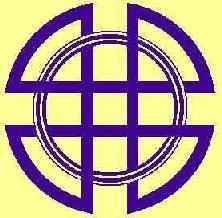
Instructional Materials for Craig White's Literature Courses
|
|
unity / continuity / (aspects of organization) |
|
Why are Unity, continuity, and transition in writing important?
Aesthetics or pleasure: Readers like variety but also want the parts of an essay to form a whole. Readers dislike too much hopping and skipping from one unrelated theme to another, in response to which they often give up. It's the writer's job to unify the materials or put things together—not the reader's.
Depth or extension of thought: The longer you stay with a subject, the farther or deeper the subject develops. Changing topics or subjects frequently makes for brief and superficial treatment—a lot of this and that but nothing in particular.
As you extend a subject, theme, or idea, you inevitably think of other topics or issues. At that point, a bad outcome is that these other topics or issues can get you off your subject, but a good possible outcome is that you connect these new ideas or subjects to the subject you started; or you transition from one subject to another so that connections are made and unity is maintained.
Organizing your thinking also generates more ideas, connections, applications. The more you organize your thoughts, the more and better you think.
Warning: Like developing your thought, developing your organization doesn't happen all at once. Writers often think they either get something or they don't. Instead, keep returning to what you're writing just as you return to a problem you're trying to solve. Each time you look at your draft, you'll see it differently and make it better.
![]()
How to develop and
maintain unity?
![]() From the top down—intellectual approach
(thinking on a straight line)
From the top down—intellectual approach
(thinking on a straight line)
![]() From the bottom up—technique or craft
(connecting the parts to build a larger whole)
From the bottom up—technique or craft
(connecting the parts to build a larger whole)
(In
practice most writers do both—drafting from top down; revising from bottom up.)
![]()
From the top down: the intellectual approach means keeping a large theme in sight or an idea in mind and chasing it, never letting it slip completely away, no matter how many twists and turns you take. “Pursue the thought.” When you lose it, chase it down and reconnect.
![]() Whatever idea you start with, stay with it. If the subject has to change,
reflect and comment on how it is changing. (Don't hope your reader doesn't
mind.)
Whatever idea you start with, stay with it. If the subject has to change,
reflect and comment on how it is changing. (Don't hope your reader doesn't
mind.)
![]() Readers will follow changes of direction as long as you acknowledge the
shift and think your way through it.
Readers will follow changes of direction as long as you acknowledge the
shift and think your way through it.
![]() What you started with remains important, though, because it’s what your
reader started with—a reader doesn't forget that first impression and expects
you to fill it out.
What you started with remains important, though, because it’s what your
reader started with—a reader doesn't forget that first impression and expects
you to fill it out.
![]() Keep looking back at what you started with. Connect new developments to
it. If you made the move from point A to point B, there has to be a connection,
so think about the shift and how it happened. The connection or continuity will
be revealed.
Keep looking back at what you started with. Connect new developments to
it. If you made the move from point A to point B, there has to be a connection,
so think about the shift and how it happened. The connection or continuity will
be revealed.
![]() When shifting paragraphs, look back to the previous
paragraph or what you started with, then look forward
to where you’re going. Consider continuity.
When shifting paragraphs, look back to the previous
paragraph or what you started with, then look forward
to where you’re going. Consider continuity.
![]() The top-down, intellectual approach is especially helpful for writing
under pressure, in a hurry or on the spot, without much chance for revision.
The top-down, intellectual approach is especially helpful for writing
under pressure, in a hurry or on the spot, without much chance for revision.
![]() An alternative
way to start
is to ask yourself, "Where do I want to come out? On what point do I want to
end? Where do I want the essay to land?" Keeping this goal in sight as you write helps you stay on-point, and you'll find yourself moving faster and more
confidently to the point(s) you want to make.
An alternative
way to start
is to ask yourself, "Where do I want to come out? On what point do I want to
end? Where do I want the essay to land?" Keeping this goal in sight as you write helps you stay on-point, and you'll find yourself moving faster and more
confidently to the point(s) you want to make.
![]()
From the bottom up: “technique” or “craft” of making on-the-spot connections between units of speech or thought—connections between paragraphs, sentences, parts of sentences.
![]() This approach
is best in revision, but with practice you can learn to do it
on the spot or under pressure.
This approach
is best in revision, but with practice you can learn to do it
on the spot or under pressure.
![]() As you make
small connections between parts, you learn how the larger pieces fit, or you
make them fit
in ways you couldn't imagine without the discipline of writing.
As you make
small connections between parts, you learn how the larger pieces fit, or you
make them fit
in ways you couldn't imagine without the discipline of writing.
![]()
Techniques involved in this approach are often called
“transitions.”
3 ways of making
transition:
(non-exclusive—all 3 may be in operation in a single unit of thought)
1. repeat key words or concepts from one part to another
(Students may be taught not to repeat words or phrases, but some repetition is desirable for refocusing or re-centering topic. Example: Public speakers repeat key words at intervals (e.g., "jobs," "fairness,") to remind people of the point they've been making and are continuing to make.)
2. demonstrative pronouns and adjectives
(this, that, these, those; such)
3. “transitional” or “signal” words and phrases
(most obvious forms of transition, but the first two are more thematic and
subtle)
causation / logic: because, therefore, since, thus, as a result, consequently
contrast: but, however, yet, in contrast
sequence: then, next, following, before, etc.
addition: and, in addition, also, further, another, finally, first-second-third (be careful of this option—often piling on examples, as I may be doing now . . . )
For further examples, visit transitions page.
 |
Paragraph structure |
 |
Paragraph length: for academic writing, most paragraphs run 4-7 sentences long, but lengths can vary, especially relative to sentence length. Paragraphs in popular writing (especially newspapers) usually run shorter (but not always).
Structure:
Topic sentence: Usually the first sentence (sometimes two sentences) of a paragraph. The topic sentence is normally a fairly long sentence because it has to perform three functions:
1. state main idea of paragraph
2. connect to thesis or main point
3. provide transition from previous paragraph
Supporting
Sentences:
Usually the interior sentences of the paragraph that support or develop the topic sentence
Content: facts, quotations, testimony, examples, analysis, commentary. In brief, the supporting sentences tend to be more concrete and particular, while the topic sentence tends to be more abstract or thematic and general.
(Optional)
Summarizing Sentence:
If your paragraph becomes so long that its main idea or point may get lost on the way through the supporting sentences, try a concluding sentence that summarizes where you’ve arrived and returns to and refocuses the topic sentence.
Warning: Some students are taught to use the concluding sentence of a paragraph to make a transition to the next paragraph. This can work sometimes but isn't standard practice. Transition is almost always after a paragraph shift, not before the shift.




